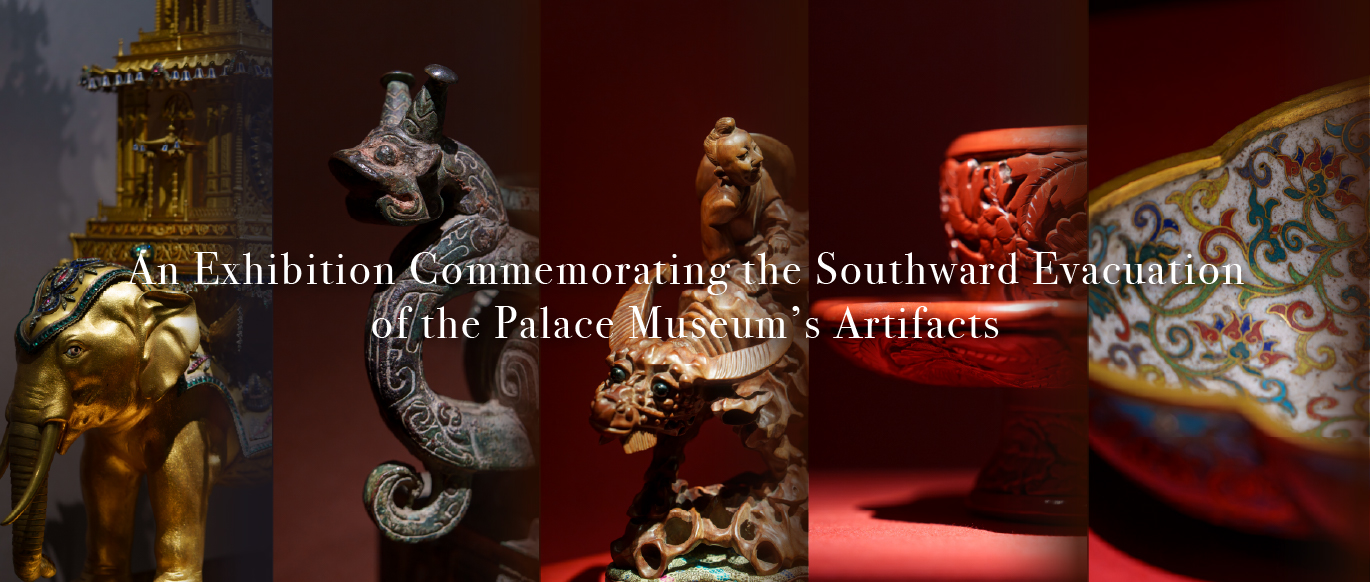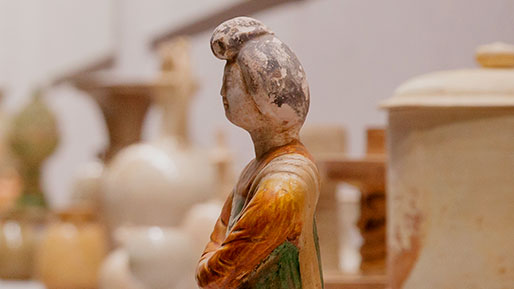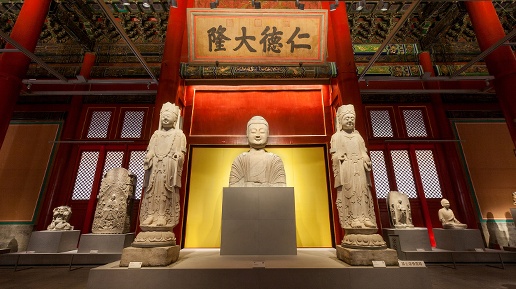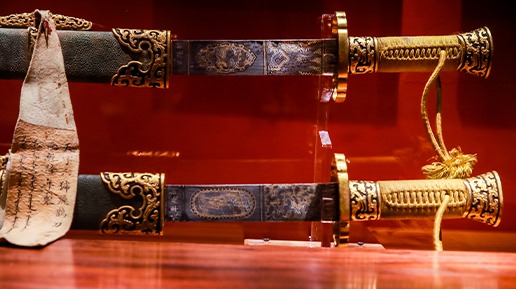
Location:The Palace of Tranquil Longevity Sector (Ningshou gong qu)
The Treasure Gallery is a series of exhibition spaces in the northeast part of the Forbidden City in an area of the Museum known as the Palace of Tranquil Longevity Sector (Ningshou gong qu). It consists of six gallery rooms displaying pieces from the imperial collection and extant accoutrements for palace life. All of these exquisite items are made of precious materials, such as jade, jadeite, gold, silver, pearls, and other precious and semi-precious stones. The superb craftsmanship and inestimable value of each piece is aptly summarized in the title of the gallery.


Occupying a large area in the northeast of the Forbidden City, the Palace of Tranquil Longevity Sector was originally designed as the private paradise of the Qianlong Emperor (r. 1736-1795) for after his retirement from imperial duties. The courts in this sector contain expansive halls, intimate residential chambers, a grand theatre (now the Gallery of Qing Imperial Opera), a scenic garden, and solemn Buddhist shrines. The overall layout of this rectangular sector is modeled after the Forbidden City. This relatively secluded and independent area creates the perfect environment for displaying the treasures of dynastic glory.


The Treasure Gallery is accessed through the Gate of Conferring Blessings (Xiqing men, the entrance to the Palace of Tranquil Longevity Sector).
An additional ticket (10 yuan/person) is required for admission to this area, which houses both the opera gallery and Treasure Gallery.
------
The Gallery Upgrade 2018-2019
Located in the Forbidden City in the area of the Palace of Tranquil Longevity (Ningshou gong), the Treasure Gallery has been one of the Palace Museum's most important permanent exhibitions since the gallery’s opening in 1958. The works on display are crafted with gold, silver, jade, emeralds, pearls, and other gems and semi-precious stones. Having previously undergone several renovations, the gallery has once again been upgraded. Known as the second phase of renovations, this project included the south and north galleries of the western corridor halls flanking the Hall of Imperial Supremacy (Huangji dian) with four spaces showcasing pearls, gold and silver, jade, and artificial potted landscapes. The first phase upgraded the south and north galleries in the eastern corridor halls, which were opened to visitors September 30, 2016. This second phase has been completed for opening before the Spring Festival of 2019.
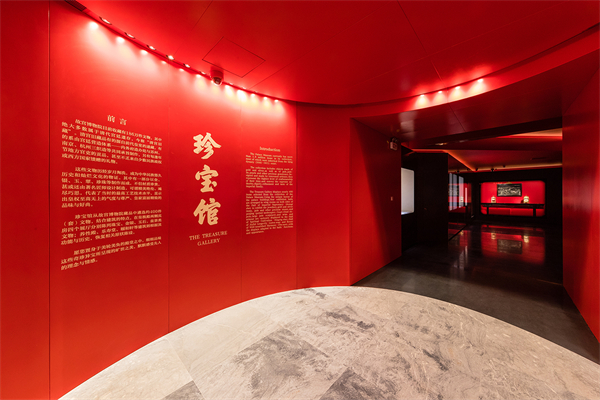
With an area of approximately 220 square meters, the south gallery in the western corridor showcases artificial potted landscapes (called penjing) artfully made with gems, gold, silver, pearls, coral, ivory, enamel, lacquered wood, and other materials. Imbued with auspicious significance, these splendid works were indispensable ornamentations in the Qing-dynasty (1644–1911) court during festivals and ceremonies. Also presented to the court as a form of tribute, the landscapes reflect unique characteristics of the lavish lifestyle enjoyed by the Qing imperial clan. Such a display of potted scenes has never before been included in the Museum’s permanent exhibitions. One of the most exquisite pieces on view is a large piece of red coral potted in a vessel of gilded copper with recessed enamel panels in the flowering-crabapple style (haitang shi). At over 60 centimeters in length, this piece of coral is the largest in the Museum’s collection. Another featured work is a potted landscape with bamboo crafted from green jade and white-jade rockery. The elegant work shows the advanced artistry of the period.
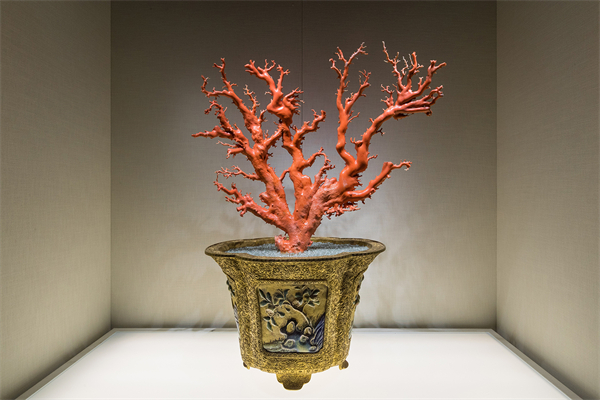
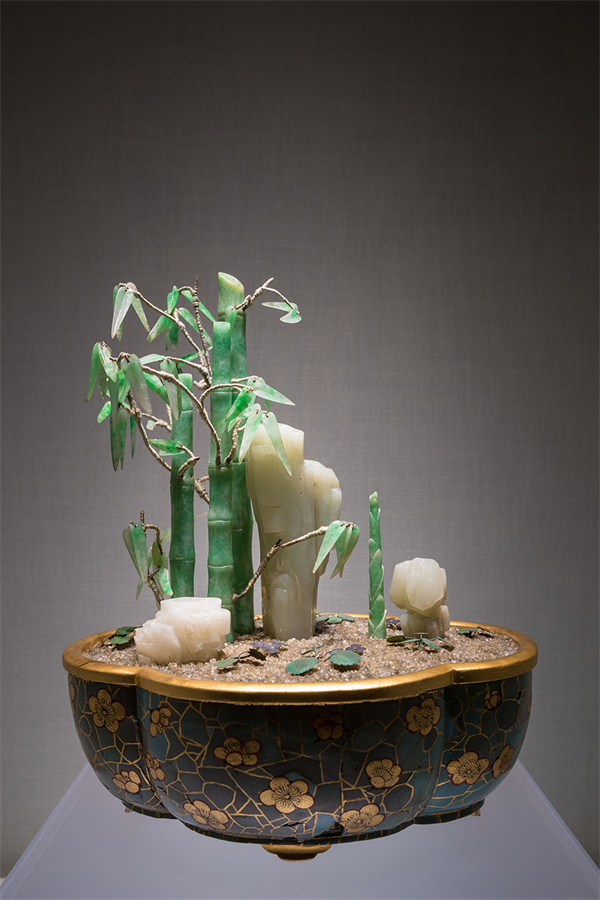
Potted Landscape with Bamboo and Rockery
The north gallery in the western corridor of the Hall of Imperial Supremacy is approximately 340 meters square and houses works of jade and other colorful semi-precious stones. Jade carving is an integral part of China’s ancient cultural heritage. The Qing court oversaw the apex of this artform through the meticulous selection of materials and expert craftsmanship. Hetian jade from China’s western frontier of Xinjiang was the most highly valued with green jadeite being most favored by the imperial family beginning in the mid-Qing period. Other fine works made of agate, crystal, lapis lazuli, turquoise, malachite, rose quartz, Shoushan stone, and other materials display the artistry of the Qing dynasty. One of the works on view is a scene of a noblewoman by a moon gate under a paulownia tree carved from white jade; the piece was delicately crafted from the highest quality jade and utilizes the material’s natural shape.
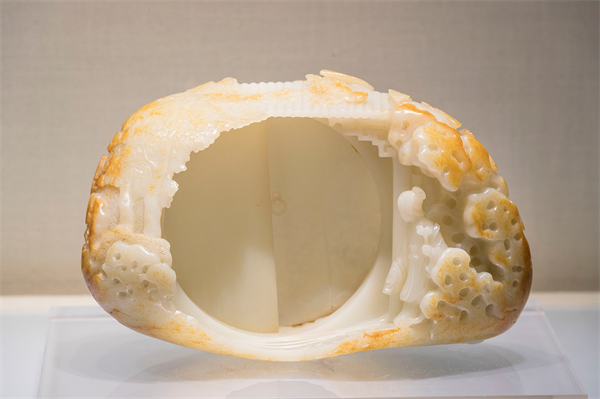
Scene Carved from White Jade of Noblewoman under a Paulownia Tree
Another featured piece is a trio of seals made from Tianhuang stone linked together with a chain; the seals and the chain were carved from one unbroken stone. The exquisitely carved trio was made for the Qianlong Emperor (r. 1736–1795) for after his retirement from court duties when he assumed the role of Emperor Emeritus. The last emperor of the Qing, Puyi (the Xuantong Emperor, r. 1909–1911), took these linked seals with him when he vacated the palace. Finally submitted to the newly established People’s Republic of China in 1950, the seals were eventually returned to the Forbidden City.

Linked Seals Carved from Tianhuang Stone
The heritage architecture of the Forbidden City is one of the defining features of the Palace Museum. The structures of the palace have inherent limitations and present certain challenges for historical preservation and exhibition curation. Determining the best strategy for utilizing the architectural design while seeking to showcase the treasures of the imperial clan are just a couple of these challenges. In addition to the exhibition spaces, display cases, and lighting, this upgrade included the installation of four scenes to highlight unique aspects of court life. One of the scenes is found in the south gallery and features an urn carved from green jade with a dragon-among-clouds design as a testament to the exquisite artisanship of the mid to late Qianlong reign. Additionally, the north gallery has a cabinet of curiosities displaying works of jade, ceramics, enamel, glass, and other materials.

The completion of this second phase of renovations complements the Museum’s permanent exhibitions and is presented as a gift to visitors at the beginning of the jihai year.





